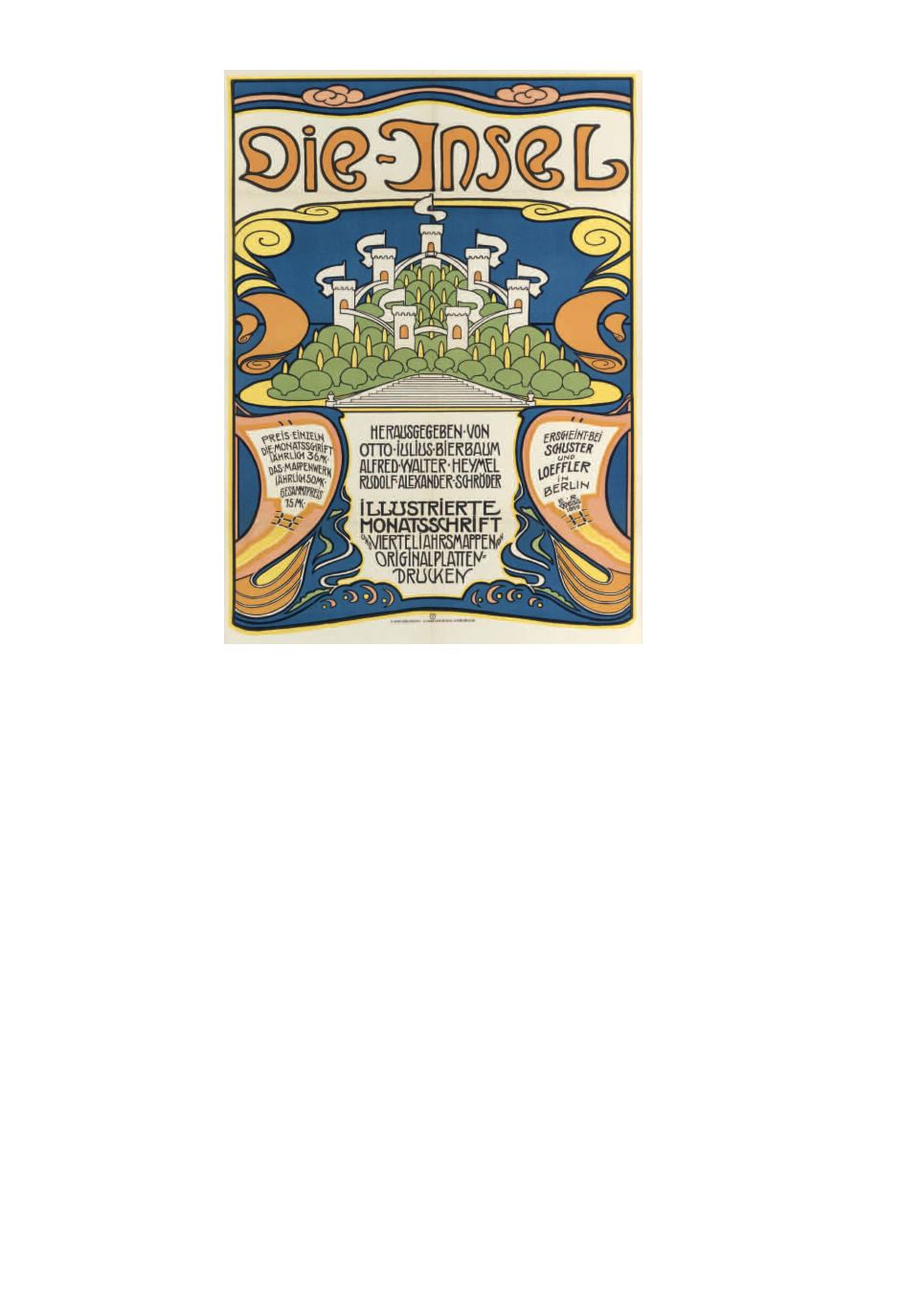

EMIL RUDOLPH WEISS (1875-1942)
10
●
DIE - INSEL. 1899.
32
1
/
4
x23
1
/
2
inches, 90x59
3
/
4
cm. Kunstdruckerie Kunstlerbund, Karlsruhe.
Condition B+: minor restoration along vertical and horizontal folds; repaired tear and minor restoration in image.
As a regular contributor to
Jugend
and
Pan
, Emil Weiss was heavily involved in the birth of Jugenstil (The
German Art Nouveau movement). He had studied painting in Paris, where one of his fellow students was
Toulouse-Lautrec, but he found his lasting fame as a designer and a typographer.
Die Insel
, a Munich-based
publication, debuted in 1899. Although it only lasted until 1901, it is considered one of the most
important magazines published during its era. Its content was of the highest literary standards, featuring
the works of such authors as Rainer Maria Rilke, August Strindberg and Frank Wedekind. Graphically,
under the art direction of Peter Behrens, it was revolutionary. This poster is a fairy tale fantasy of an island
seemingly floating amidst decorative motifs, in a style that may well have influenced the psychedelic artists
in San Francisco in the 1960s. Rademacher p. 69, DFP-III 3380, Kunst p. 56.
[2,000/3,000]
DESIGNER UNKNOWN
11
●
AUSSTELLUNG / VEREINIGTE WERKSTÄTTEN FÜR ANGEWANDTE KUNST.
KREFELD. 1907.
19
1
/
2
x27
1
/
2
inches, 49
1
/
2
x70 cm. A. Heinz & Klenk.
Condition B+ / A-: minor tears and creases at edges; time-staining and foxing in left margin and image. Paper.
Like many other German cities, Krefeld opened itself to culture through the founding of a museum in
the 1890s. The first museum director, Friedrich Deneken, had connections with important artists
including Peter Behrens, Hermann Muthesius and Henry van de Velde. He instituted an ambitious
exhibition schedule, bringing many influential shows and paintings to the museum and exposing the local
populace to quintessential works and art movements. The exhibitions included examples of Dutch art
(see Swann sale 2006, lot 4), French Impressionism and German Expressionism.
[3,000/4,000]
10
















